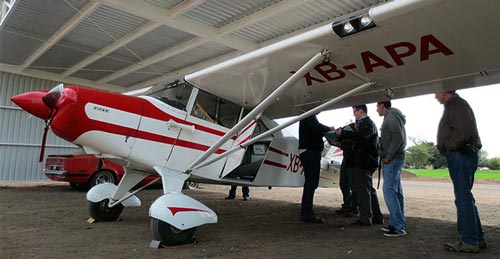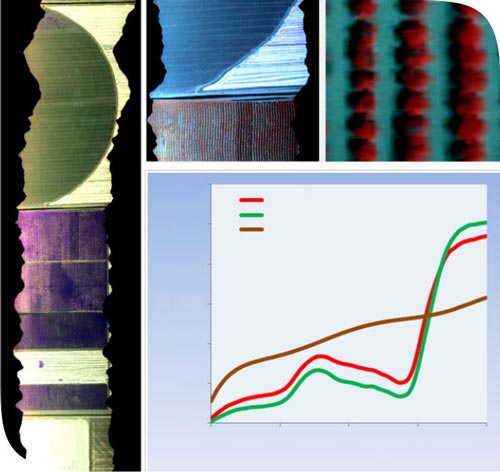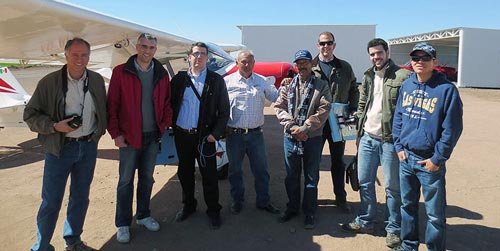
Last week CIMMYT obtained a new hyperspectral camera and thus significantly expanded its remote sensing capabilities. Pablo J. Zarco-Tejada, director of QuantaLab remote sensing laboratory, Instituto de Agricultura Sostenible (IAS), Consejo Superior de Investigaciones Científicas (CSIC), Córdoba, Spain, and his team spent 13-17 May 2013 at the Campo Experimental Norman E. Borlaug (CENEB) in Ciudad Obregon, Mexico, installing the new camera on the remote sensing platform they delivered during their last visit in February 2013.
Zarco-Tejada and his team also trained a pilot and CIMMYT staff on the use of the hyperspectral remote sensing equipment, which was obtained through a capacity building project between CIMMYT’s Global Conservation Agriculture Program and QuantaLab-IAS-CSIC, funded by MAIZE and WHEAT CRPs under Strategic Initiative 3.

Hyperspectral technology uses the most advanced remote sensing cameras that are sensitive to the visible and near infrared spectral regions. This allows for acquisition of hundreds of images at once, each of them covering a different and narrow spectral region in a continuous mode. While multispectral cameras widely used for crop monitoring through remote sensing methods can acquire only five or six spectral bands at once, the new hyperspectral imager owned and operated by CIMMYT obtains 250 spectral bands at the same time, covering the entire electromagnetic spectrum between the visible and the near infrared regions. This opens up tremendous new and powerful avenues for research on early crop stress detection, physiological assessment, conservation agriculture, plant breeding, disease detection, etc.
The thermal, multispectral, and hyperspectral cameras are installed on the same aircraft which allows researchers to obtain both thermal and multi/hyperspectral images concurrently. With resolutions ranging between 20 and 50 centimeters, it is possible to target single experimental plots as well as within-field spatial variability in commercial fields. The cameras acquire 250 bands of 6.4-nanometer width in the 400-885 nanometer region, scanning swaths of 500 meters at 30-50 centimeter pixel resolution.
This makes it possible to calculate several new spectral indices related to photosynthetic pigments, such as chlorophyll content, carotenoids, xanthophylls, and anthocyanins, as well as measure physiological and structural indicators, which can be used to map nitrogen status and derive nitrogen recommendations to improve wheat quality. Most importantly, the new hyperspectral imager allows for early detection of stress using narrow-band indices related to light-use efficiency, as well as for quantifying chlorophyll fluorescence emissions by the plant, which is the focus of current cutting-edge international research on canopy photosynthesis. This has proved to be a better physiological indicator than other traditional vegetation indices.
The hyperspectral camera was tested over an area near CENEB and is now fully operational for phenotyping and physiological and agronomic research. Image processing methods and hyperspectral analysis procedures were used for signature extraction from the imagery and observation of the spectral differences between healthy and stressed vegetation pixels.

Configuration of the new hyperspectral camera for different operation modes and the identification of successful remote sensing indices will continue through research collaboration between CIMMYT and QuantaLab-IASCSIC. The algorithms and state-of-the-art methods for the processing of the imagery, as well as field instrumentation required for the flights, are now available at CENEB. The same instruments are planned to be used during the upcoming cropping season in El Batán and Toluca.
 Capacity development
Capacity development 
